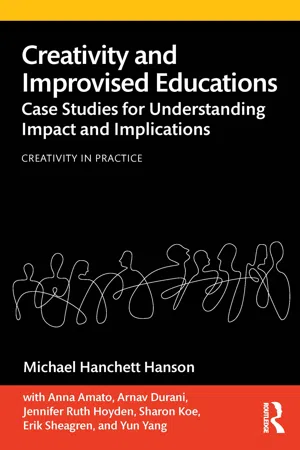
Creativity and Improvised Educations
Case Studies for Understanding Impact and Implications
- 232 pages
- English
- ePUB (mobile friendly)
- Available on iOS & Android
Creativity and Improvised Educations
Case Studies for Understanding Impact and Implications
About This Book
Examining the improvised relationships among lifelong learning, formal education, and creativity, this volume provides detailed case studies of the creative work of people from a wide variety of fields. Each profile allows readers to explore how real people's distinctive points of view, senses of purpose, and ultimate contributions developed through participation in complex worlds. By looking at creativity as a distributed and participatory process, these cases deconstruct the myth of solitary creative genius, while exploring applications of complexity theory to creative work and raising new questions for creativity research. Providing a framework for thinking about education, agency, and change, this book is valuable for both students and researchers seeking concrete ways to broaden their understanding of creativity in practice.
Frequently asked questions
Information
1
Participating through Theater
Our Starting Point
Keith Johnstone: The Education of Improvisation
Education and Teaching
Johnstone’s Early Education and Its Later Uses
Table of contents
- Cover
- Half Title
- Series Page
- Title Page
- Copyright Page
- Dedication
- Table of Contents
- List of Figures
- Foreword
- Acknowledgements
- Introduction: Uncertain Times
- Chapter 1: Participating through Theater
- Chapter 2: Participating through Neurology
- Chapter 3: Participating through Cuisine
- Chapter 4: Participating through Knitting
- Chapter 5: Participating through Revolution: Mao
- Chapter 6: Participating through Revolution: Dewantara
- Conclusion
- Writing Team
- Index